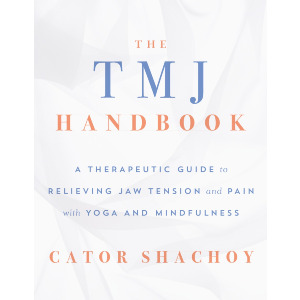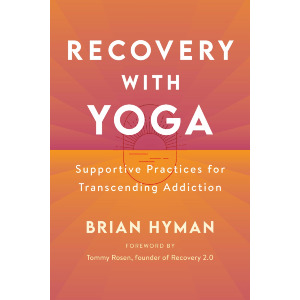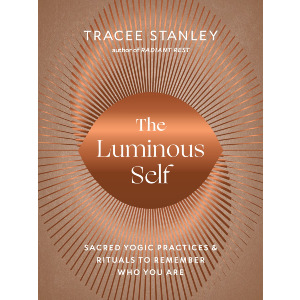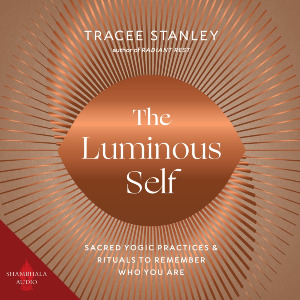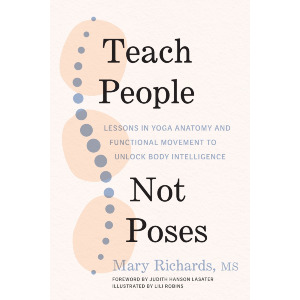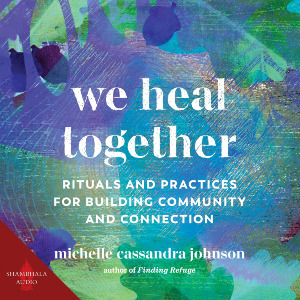bhava-pratyayo videha-prakrti-layanam (1:19)
Samadhi is a natural state for someone
who is enlightened.
shraddha-virya-smrti-samadhi-prajna-purvakah
itaresham (1:20)
For the rest of us, we must use faith, passion,
mindfulness, quiet, and good judgment to
support our journey toward samadhi.
Our life is a reflection of our attitude, the energy of our mind. When we look at the world angrily, fearfully, cynically, it’s easy to get sucked into arguments, the blame game, jealousy, and gossip. But when we approach the world optimistically and confidently, we are open to happiness, have greater resilience, make better decisions, and increase our chances of success.
But what is an attitude for success? The right attitude, the one needed for a successful practice, is made up of five key elements: faith, energy, mindfulness, focus, and wisdom.
1. Faith (shraddha)
In yoga, faith isn’t a spiritual-based faith or blind faith in something. It’s faith that we are going in the right direction, faith in our path, faith that our practice will lead to a life of ease. We may not know where we will end up, but we have certainty, conviction, and courage in our journey.
Reflection
Having faith is an act of courage. Write down your personal definition of courage. How has that been shaped? Family, movies, experiences? How could your definition of courage support you in bringing the state of flow into your everyday life?
2. Energy (virya)
Would you expect your phone to stay charged if you didn’t plug it in? We need the same energy, fuel, and attention. In Sanskrit, virya refers to the power of a great warrior to overcome his enemies. It is the mental and physical energy, endurance, diligence, and enthusiasm we need in our practice. It is the idea that what we put in is what we get out. It is the commitment to show up and do the work even when journaling, meditating, or unrolling our mat is less appealing than snuggling on the couch and catching up on our favorite show.
Reflection
What in your life is more deserving of your energy now?
3. Mindfulness (smriti)
Classically, smriti is translated as memory, but it’s not reminiscences. Rather, it’s a call to reflect on a past positive experience to bolster us in the present moment and keep us mindful and aware on our path.
Reflection
List three challenges you overcame. What did you change within yourself to succeed?
4. Focus (samadhi)
By focusing on our physical, mental, and spiritual practice, we will shake off distractions and be able to develop deeper and deeper levels of concentration. Through focus, the state of samadhi will transcend our everyday, singular pursuits.
Reflection
Make a list of your distractions. Then choose a time or a task where you can be silent and distraction-free. Maybe it’s eating lunch, paying bills, or folding laundry without music or the television on in the background. Maybe it’s silencing your social media during breakfast or putting your phone out of reach while you’re in bed. What do you notice? How did your body or mind react?
5. Wisdom (prajna)
Each of us has a voice within us, but we don’t always hear it. Sometimes we’re too loud. Sometimes we’re not speaking the same language as our inner voice. Prajna isn’t the knowledge that comes from book learning. Rather, it’s the type of wisdom that helps us quiet the distractions and learn to listen, hear, and understand our inner voice, our intuition.
Reflection
If your eight-year-old self traveled forward in time, what would he want you to know about yourself right now? What advice would he give you?
If your ninety-year-old self traveled back in time, what would she want you to know about yourself right now? What advice would she give you?
tivra-samveganam asannah (1:21)
The state of samadhi comes quickly to the
sincere and diligent.
mrdu-madhyadhimatratvat tato’ pi visheshah (1:22)
The time necessary to reach the state of samadhi is based on the strength of our commitment to our practice—mild, medium, or intense.
Often we just see the highlight reel. The New York Times front-page review and inclusion in Oprah’s Book Club. The at-the-buzzer, game-winning three-point shot. The witty acceptance speech. We don’t see the butt-in-chair discipline, the hours of practice at the foul line, the years of failed auditions. We see the success but not the attention and effort.
Here, Patanjali tells us that if our goal is sincerely in our heart and we have truly committed, we will have success. How long that takes depends on the effort we put in—mild, medium, or intense.
In The Secret of the Yoga Sutra, Pandit Rajmani Tigunait lists three categories of effort: the first is someone who doesn’t put in much effort. He’s waiting for miracles and simple, easy solutions. The second person starts his practice but stops when obstacles pop up in his path. The third person cannot be stopped.
Are you willing to do the work? Are you looking for easy solutions? Do you balk under pressure? Or are you undaunted by obstacles and unafraid to invest the time and resources to achieve your goals?
Reflection
List your priorities. Which of these do you have to do, choose to do, or want to do? For which of these would you like to adjust the intensity of your effort? It can go in both directions and could be from mild to intense or intense to medium.
 Kelly DiNardo was first certified to teach yoga through YogaFit in 2003 and went on to receive her 200-hour RYT through Living Yoga Teacher Training. In 2009, she opened Past Tense yoga studio in Washington, DC.
Kelly DiNardo was first certified to teach yoga through YogaFit in 2003 and went on to receive her 200-hour RYT through Living Yoga Teacher Training. In 2009, she opened Past Tense yoga studio in Washington, DC.

Amy Pearce-Hayden has devoted 20 years of study, practice, and teaching to classical yoga, ayurveda, tantra, and meditation.





